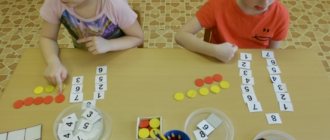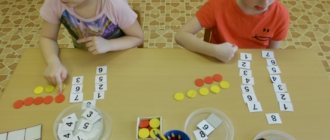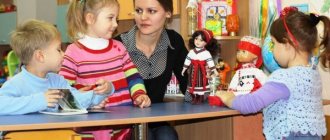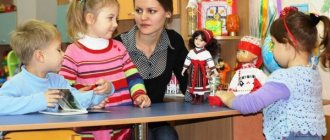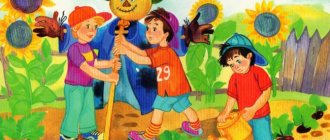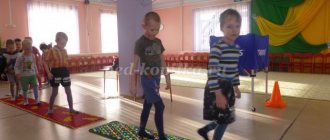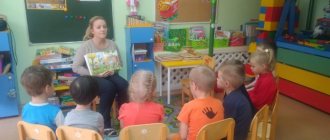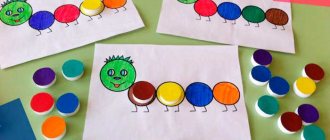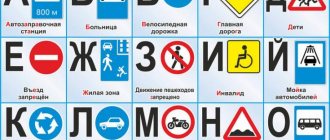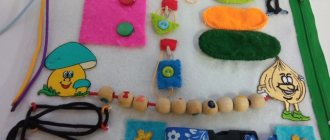Developmental activities for children 3 - 4 years old “The world around us”
Author I. Bushmeleva. Artist N. Gubareva.
At the age of 3-4 years, a child should be able to determine the time of day without difficulty.
Task for a child : Look carefully at the picture and say what the artist mixed up, what he drew incorrectly, why?
A child aged 3-4 years usually already knows that different vehicles are driven by different people. Tell him the name of the professions “machinist”, “tanker”, so that these words will enrich your child’s vocabulary.
Task for the child: Pick a pair. What kind of transport does this or that driver drive?
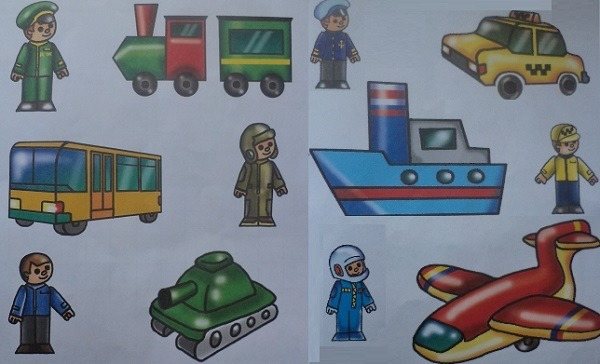
The child must answer your questions. It is important to present everything in the form of a game.
Assignment (questions) for the child:
1. In the morning the sun rises, and in the evening... (sets)
2. It rained, and... (puddles) appeared on the asphalt
3. Birch has leaves, and pine has... (needles)
4. In winter it often snows white, fluffy... (snow)
5. Water flows from the tap. And when it freezes, it turns into... (ice)
6. Is the ice soft or hard? (solid). Can it flow like water? (No). Is it cold or warm? (cold). Is the water cold or warm? (can be cold and warm).
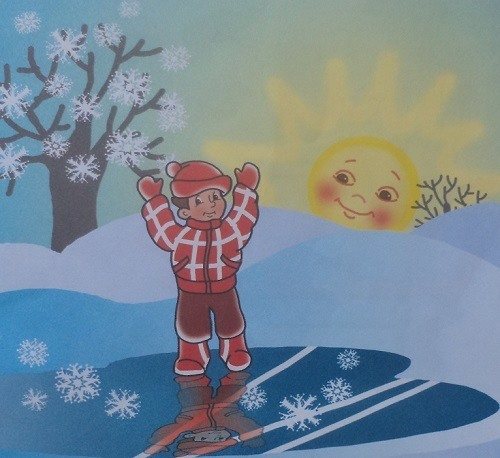
A 3.5-4 year old child must distinguish animals that can live in city apartments from animals living in the countryside.
Activity with a child: look carefully which of these animals live in the village.
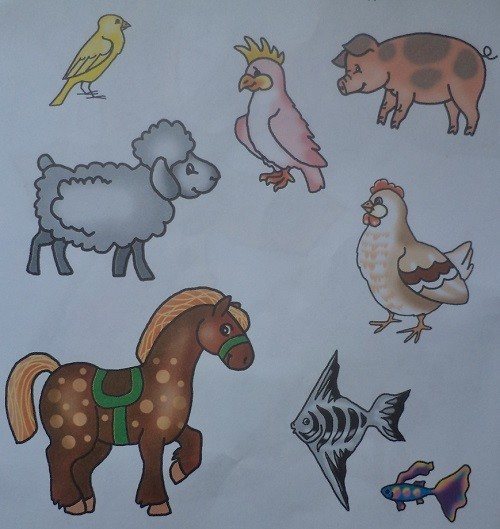
We teach a child to recognize a tree by its leaves. We study the names of flowers.
Task for a child : look at the leaves, from which tree did they fall (birch, maple, willow)? What are these flowers called (chamomile, rose, tulip, cornflower)?
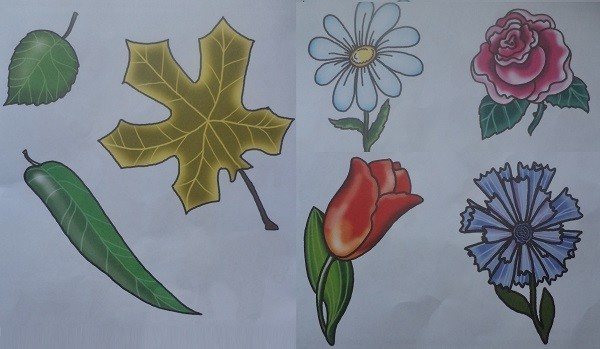
A child of 3-4 years old, of course, already knows wild animals (from fairy tales, pictures, poems). He must be able to describe the animal and tell some of its features.
Activity with a child : There are animals in the picture, name them. Which one of them lives, where does it live, what does it like to eat, what color is its skin, which one is bigger? What are the “legs” of a wolf (paws) called? What about the elephant's nose (trunk)? Which animal has the largest neck, ears, teeth?
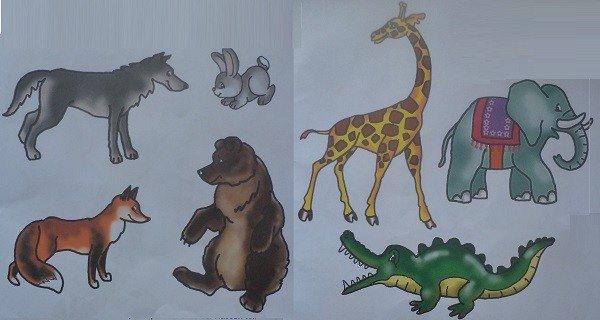
A child of 3-4 years old should be able to separate vegetables from fruits and voice the fact that some fruits are vegetables (grow in the garden), and others are fruits (grow on trees).
Assignment for a child: Miraculously, the tree grew fruit. Name them. Look and tell me which fruits do not grow on trees. Where do they grow?
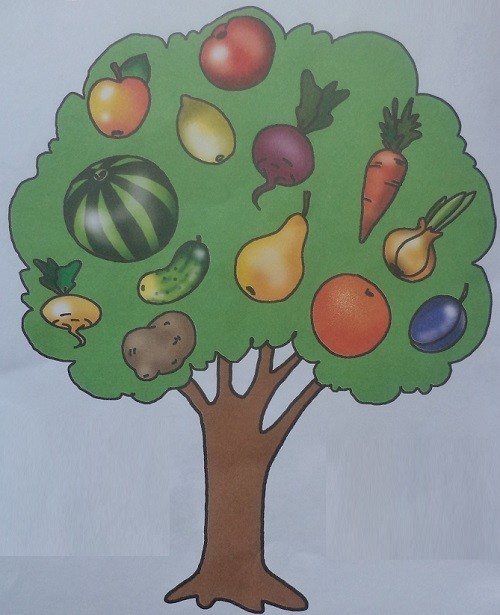
A child aged 3-4 years already knows that there are adults and children. But what are they called correctly?
Activity with a child : Please tell me who is drawn in this picture (animals, beasts)? Please note that these are parents and their children. Do you know what they are called? (elephant (elephant) - baby elephant, bear (shema bear) - bear cub, cat (cat) - kitten, tiger (tigress) - tiger cub).
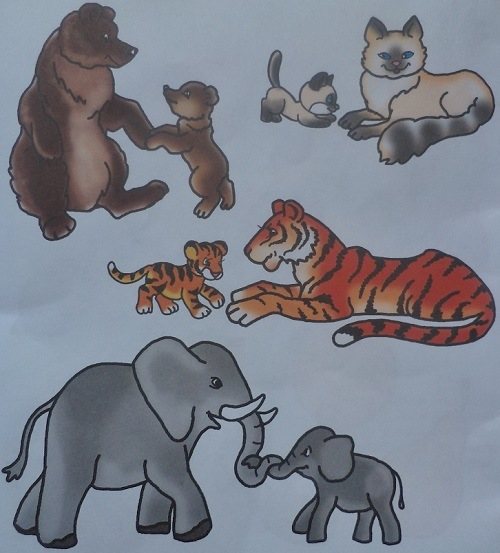
A 3.5-4 year old child should already know polite words and be able to use them correctly.
Lesson with a child: question - answer. Ask your child to answer your questions.
- In the morning you woke up and went to brush your teeth, on the way you met your mother. What will you tell her? (Good morning).
- In kindergarten, the girl Tanya treated you to an apple, and you told her... (thank you).
- You have friends? What are their names? If your friend asks you to help him, what will you do? (I'll help).
- Do you go to kindergarten? What time of day do you come to kindergarten (in the morning), and when do your parents pick you up (in the evening).
- What do you say to your family when you go to bed (good night).
- You came to visit a friend, what will you say when you see him? (Hi Hello).
- Mom asked you to help her clean the room, what will you do? (I’ll help, collect toys, etc.).
- Grandma was knitting socks for you, and her ball of yarn fell, what will you do? (I'll pick it up).
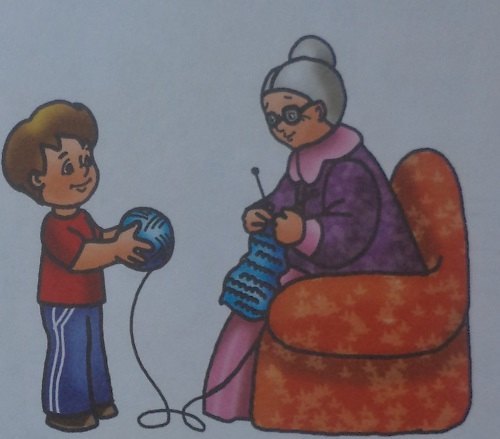
Development of logic
As noted above, the baby is already quite smart. Various problems arouse his great interest. Prepare special material for these classes in advance.
Recommended topics:
- the concept of “one - many”;
- comparison “small object - large”;
- familiarization with the concepts of “top” and “bottom”;
- long short;
- classification of objects (for example, groups - birds, trees, vegetables);
- high Low;
- color spectrum.
For such activities, it is advisable to use prepared cards. As a rule, kids are happy to choose the “extra” one from a group of objects and love to look for changes in pictures. They like to find the right pairs.
Development of speech, counting, reading
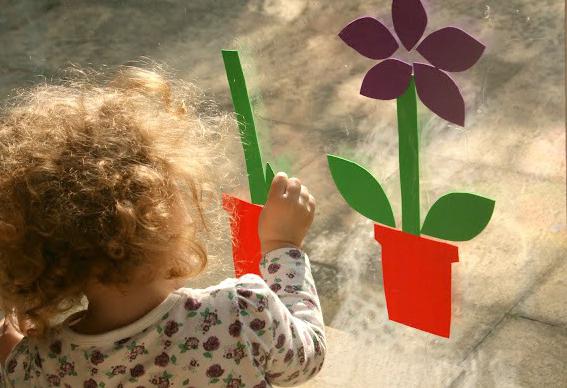
At this age, according to psychologists, it is already possible to introduce “educational” topics for classes. Children should be interested in playful forms. By properly planning a “lesson”, you can easily teach a child.
List of classes:
- learning letters;
- reading;
- studying numbers;
- counting objects;
- adding missing words to the poem;
- retelling stories, fairy tales;
- description of a picture, object;
- guessing riddles;
- learning songs, poems;
- listening to fairy tales.
Garden.
Your child will be incredibly happy and interested if you together organize his own small garden outside this summer. Even if you live in a high-rise building, you will definitely find a secluded place on the lawn near your house. Together with your baby, fence it off with pebbles or a small fence, clear it of vegetation, loosen the soil and water it.
And then do whatever you want: plant flowers, carrots, strawberries together... Or maybe you should plant a real beauty - grow a huge sunflower from a small seed?
Teach your child to look after your pets - weed weeds, water (in the morning or evening, explain what will happen if you water the garden in the middle of the day under the hot rays of the sun). Together, rejoice at the first shoots, admire the results of your work, and decorate the flowerbed with funny figures.
What does this give to the child?
Working in the garden for a child is his first biology lessons, a visual acquaintance with the life of plants. In addition, such manual labor develops motor skills, teaches responsibility, and simply makes you happy.
"Finders" - "searchers".
You can play summer “finders” with your child. On a piece of paper there is an image of various objects that need to be found on the street.
Here are my summer finds (you can download them by clicking on the picture ):
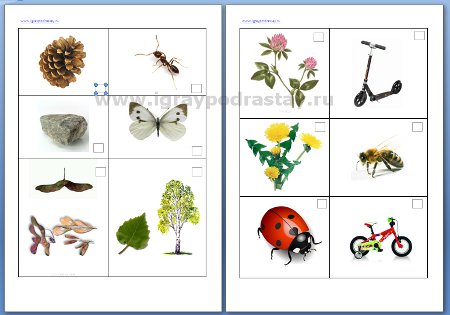
Play detective with your child - try to travel around the area and find all the objects that are drawn in the picture. Found items can be marked with a tick in a special “window”.
And if you like searching and finding, then the book “Finders” will certainly not leave you indifferent . We walk and play - we get to know the world":
Watering can.
If you still haven’t decided to organize your own flowerbed for your child, you can just play with a watering can. Take out a small baby watering can and a bottle of clean water for a walk. Invite your child to take care of the plants that grow in the yard - water them with a watering can. And after watering, weed the weeds near the flower or tree (weeds are easier to remove from soil that is damp after watering). At the same time, have a developmental conversation with your child about why plants need watering, how to do it correctly, how weeds harm plants and how to fight them (we broaden the child’s horizons).
Mathematics
My daughter understands quantity, knows numbers. We count the apples in the store, the number of people in the family and the days in the week. I have prepared materials for comparing quantities and symbols, and I plan to continue the lessons in the future - I see that the child does it with pleasure.
Grandma also has numbers and round circles on magnets. Recently we came to visit them, I attached the numbers to the refrigerator: to number 1 - one round piece, to number 2 - two round pieces. She put the rest in a bowl, and Julia herself attached them to the numbers.
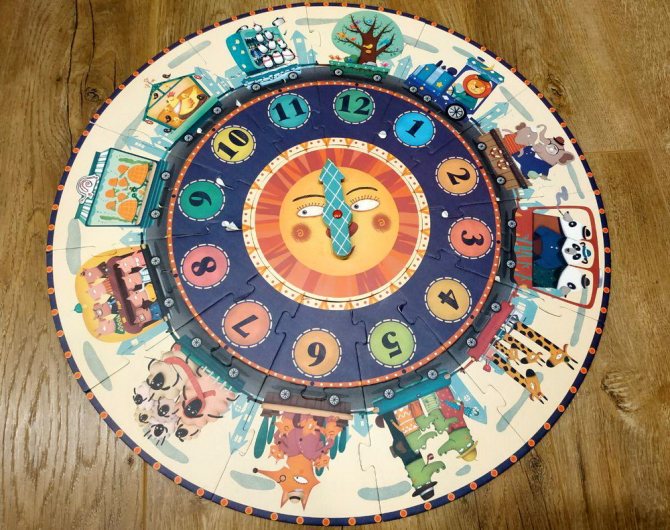
Using the clock puzzle, the child learned to count and understand that numbers can express quantity and order. In the living room there is a clock with hands, and opposite it there is an electronic clock with numbers. Already going to compare the values, but so far only 12 is unmistakably obtained
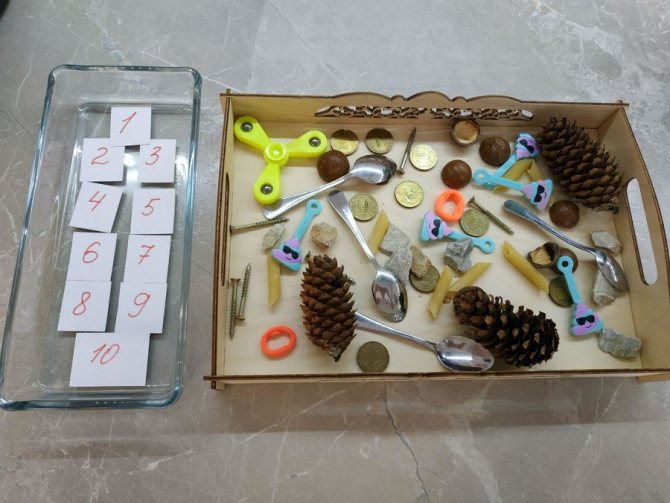
Using this set we study the numerical meaning of numbers. Next to each number is the number of items.
Games with sticks and stones.
Sticks and pebbles are an excellent material for educational games outdoors:
— You can simply count pebbles and sticks.
— They can be used to decorate cakes and sand cakes.
- You can use them to lay out various figures and silhouettes on the sand.
— With a stick you can draw shapes, letters, numbers and pictures on the sand.
— You can also make letters, numbers, and words from pebbles.
— You can play the game “who is the odd one out” (put three pebbles and one stick in front of the child, let him guess which item is the odd one out. You can also look for the extra item in other combinations: three large pebbles and one small one, three long sticks, one short, three green twigs and one dry, three white pebbles, one black, etc.).
— You can bury a pebble in the sand and ask the child to find it.
One day one letter.
You can quite successfully teach your child letters on the street. There are a lot of games for learning letters outdoors. For example:
— Mom draws a letter on the asphalt with chalk and memorizes it with the child. Then asks him to name words that begin with this letter (on his own or with his mother’s prompts). When the child names a word, the mother draws a picture depicting this word (children love it when adults draw something for them, so drawing is a great way to attract the child’s attention to learning letters).
— Mom draws a lot of letters on the asphalt with chalk, among which will be the letter that the child learned today. The mother asks the baby to find the desired letter among all the letters and circle it (or cross it out). (“Look how many different letters! Find where the letter “K” is hidden!).
— Mom draws letters in chalk at a short distance from each other. Then he asks the child to jump over the letters as if over bumps. When jumping on each letter, the child must remember the word that begins with this letter (the mother can give hints at the same time) or simply remember the name of the letter together with the mother.
— the mother begins to draw a letter with chalk, stops somewhere in the middle, then hands the chalk to the child and asks him to finish drawing the letter.
- the mother draws a letter on the asphalt (so that it can be painted) and asks the child to color this letter with chalk.
- the oldest way of learning letters from our mothers and grandmothers - we study the letters on signs and plates that you see on the street.
